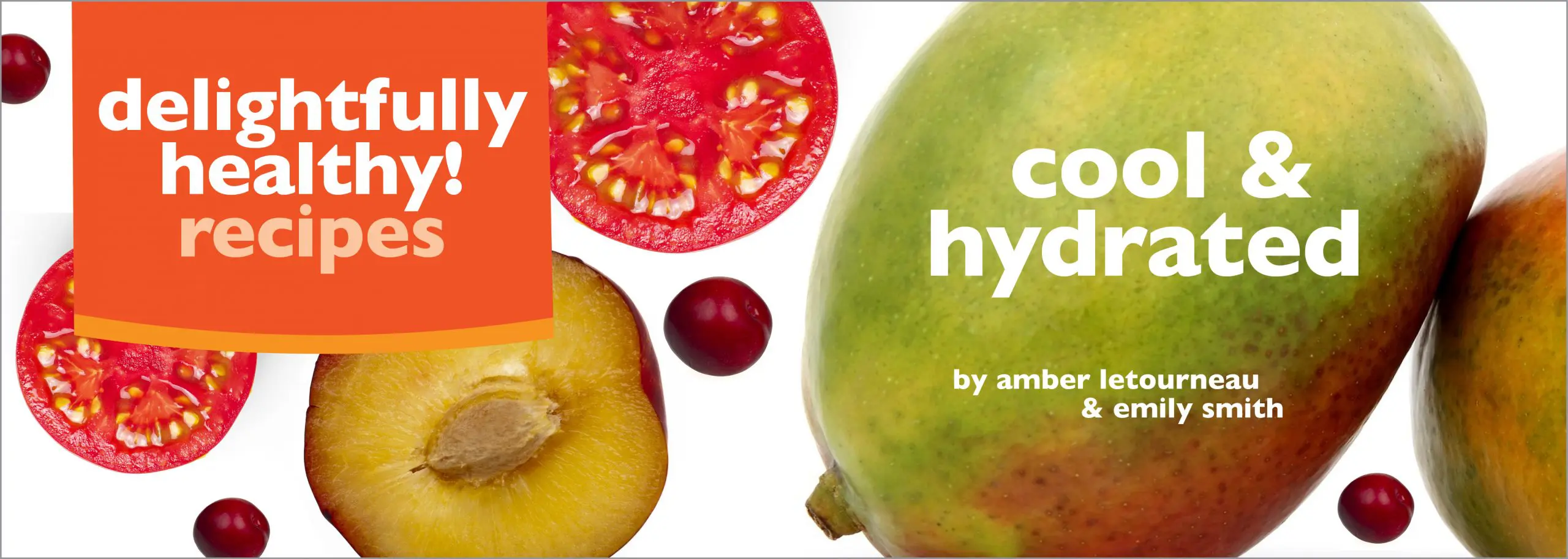
Summer is finally here, and it’s a great time to cool down with some juicy, delicious produce. Adding more fruits and vegetables to the diet helps you stay hydrated during the hot months because of their water content. Three flavorful options that contain a lot of water are mangos, plums, and slicing tomatoes. They not only provide water but are packed with other essential nutrients.
Mangos come in many varieties and flavors, but all contain lots of nutrients such as vitamin A, vitamin C, and vitamin B6. Use these tips when picking out a mango in the grocery store:
- Don’t use color as an indicator. It’s not the best way to determine if it is ripe. Always use feel.
- Squeeze the mango gently. If the mango is ripe, it will give slightly. Very similar to when you squeeze a ripe peach or avocado.
- Ripe mangos will have a fruity aroma around the stems,
After purchasing mangos, it’s important to store them at room temperature if they are not ripe. If you need to ripen quickly, place the mango in a sealed bag at room temperature. Mangoes can be refrigerated once they are ripe to slow down the ripening process. Whole, ripe mangos can be stored in the refrigerator for up to five days.
Similar to mangoes, Red Plums are drupe fruits, meaning that it has seeds surrounding a “rock-like” pit. Plums are in the same family as peaches and apricots; however, they are more diverse when it comes to flesh colors. Plums can have red, pink, orange, green, purple, and yellow flesh and come in a variety of sweetness and flavors. Plums are good sources of vitamin C, potassium, vitamin A, and fiber. Similar to mangos, look for plums that have a little “give” in them to identify if they are ripe or not. If you have an unripened plum, leave it at room temperature to ripen. Ripened plums should go in the refrigerator to slow the ripening process. Plums are a very versatile fruit and can be enjoyed in many ways, such as in salads, grilling, or raw. You can also add plums to water to enhance flavor and provide vitamins and minerals!
Also referred to as field tomatoes, Slicing Tomatoes are one of the multiple varieties of tomato that we know and see today. The edible, fleshy tomato is one of the most important vegetables throughout the world. Tomatoes  contain lycopene, a powerful antioxidant that can help protect the skin from harmful UV rays. It has also been shown to relieve oxidative stress (the damaging of cells) and reduce the risk of certain types of cancer. These tomato types are best when sliced in sandwiches, into salads, or used as a base. They are very versatile, so test your creativity and try something new! Typically, You can store tomatoes for up to 1 week at room temperature- they will continue to ripen in warmer weather. It is recommended not to store tomatoes in the fridge, but instead only do this when tomatoes have been cut.
contain lycopene, a powerful antioxidant that can help protect the skin from harmful UV rays. It has also been shown to relieve oxidative stress (the damaging of cells) and reduce the risk of certain types of cancer. These tomato types are best when sliced in sandwiches, into salads, or used as a base. They are very versatile, so test your creativity and try something new! Typically, You can store tomatoes for up to 1 week at room temperature- they will continue to ripen in warmer weather. It is recommended not to store tomatoes in the fridge, but instead only do this when tomatoes have been cut.
The best way to enjoy all of these ingredients? Mix them together in this Stone Fruit Salad recipe on a hot day to keep cool and get a nutritious punch!
Stone Fruit Salad
Recipe and photo adapted from oursaltykitchen.com
Ingredients
1 lb ripe stone fruit such as peaches, plums, mangos, cherries
1 lb ripe tomatoes, sliced into wedges
½ cup loosely packed basil leaves
½ tsp Maldon sea salt
½ tsp cracked black pepper
8 oz fresh burrata cheese
2 T extra virgin olive oil, divided
Directions
1. Halve the stone fruits and remove the pits. Dice into 1″ pieces and place into a salad bowl.
2. Halve and/or dice the tomatoes into 1″ pieces and toss them into the bowl with the diced stone fruit.
3. Top the stone fruits with fresh basil leaves, salt, and pepper. Toss.
4. Divide the salad between four plates. Nestle a piece of burrata cheese into each salad.
5. Drizzle each salad with half a tablespoon of extra virgin olive oil and serve immediately.

